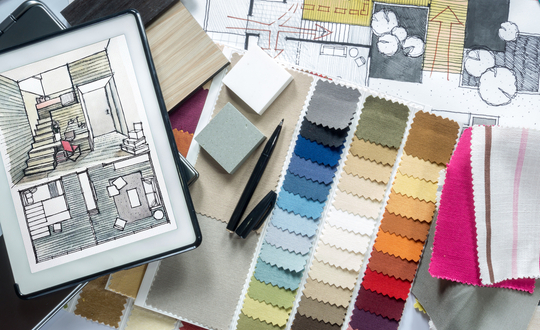Interior design can be an incredibly creative career, but sometimes you have clients who are very particular and hands-on. They know their vision and aren’t interested in any creative license you may want to take. Learn some tips and strategies for dealing with difficult clients and managing client relationships in this helpful article.
Understanding client expectations and perspectives
The first thing you should do with any client is set up a consultation. During this consultation, you should listen carefully to what the client wants and what their vision is. You can get a feel for if they’re flexible or willing to hear your input and go from there. Always be sure to ask a lot of questions to better understand their style and preferences, as well as their personality.
The initial consultation can help you identify a potentially challenging client early on. If they have specific demands, frequently change their mind, are unhappy with mockups, you may find working with them difficult. That doesn’t mean you have to avoid working with them, however. There are plenty of strategies to use before you have an escalated situation on your hands.
Read more: 7 Resources for Starting Your Interior Design Career
1. Effective communication strategies
Communication is key in most relationships, and that’s true of the client/designer relationship. Allow your clients to communicate with you and give them opportunities to supply what they are looking for in a clear way. This includes assessments, surveys, and even allowing them to share things like Pinterest boards that showcase their style. You should also be sure to communicate any challenges you’re having or reasoning for certain decisions to them so they’re involved in the process.
Some effective communication strategies include:
- Set Clear Boundaries:
- Establish professional boundaries to prevent your project growing beyond the agreed upon budget.
- Practice diplomatically saying no to unrealistic or disruptive requests.
- Use Active Listening Techniques:
- Demonstrate empathy and understanding through active listening.
- Use reflective listening to ensure clients feel heard and valued.
- Provide Professional Guidance:
- Balance the client’s ideas with your professional expertise.
- Tactfully guide clients toward more practical or aesthetically pleasing choices.
Read more: 10 Top Design Trends of 2024
2. Compromising without sacrificing design integrity
After communication, compromise is one of the most important factors in a client/ business relationship. You should try to find common ground where you can when working with a challenging client. You should have examples at the ready of past successful compromises and the finished product to show how well working together can turn out. You can also look into techniques for blending your client’s preferences with design principles. They hired an interior designer for a reason, after all.
It can also be a good idea to offer multiple options to your client so they have the ability to choose. This helps give them a sense of control. Visual aids can be a great way to go about this. Mood boards, 3D models, and your own sketches can paint a clearer picture for your client and allow them to make an informed choice based on your suggestions and their wish list.
Read more: How to Use Instagram to Grow Your Interior Design Business (Guide)
3. Enhancing the customer experience
There are many things you can do to enhance the customer experience so even the most difficult clients are left with a positive taste in their mouth. Some of these things include:
- Transparent Project Management:
- Keeping clients informed at every stage of the project.
- Handling Feedback and Revisions:
- Manage revisions without compromising the timeline or budget.
- Incorporate client feedback while maintaining design quality.
- Building Long-Term Relationships:
- Turn difficult clients into repeat customers through excellent service.
- Work on maintaining a positive relationship after the project concludes.
Read more: Bathroom Design Trends: The Ultimate Guide
Pick up more strategies to help become a successful interior designer
Difficult clients are only one of the challenges you may face as an interior designer. That’s why it’s important to learn all you can about the field and strategies to combat any challenges that come up. Learn all about what’s included in an interior design course like the one offered at the New York Institute of Art and Design and consider enrolling to equip yourself with all the tools you may need for success.





